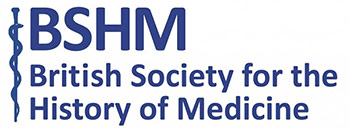Recently my wife and I have been trying to declutter our home; an emotional process that threatens domestic harmony and generates both relief and bereavement in equal measure. A lifetime of collected material artefacts and documents entombed in draws, cupboards or cardboard boxes are finally being subjected to the “William Morris test”: is it useful, is it beautiful? If not, where should it go? Relatives, friends, the sale room, eBay, charity shops, the municipal tip, or a car-boot sale are places where “stuff” can be deposited. In this way, collections become fractured, and objects might lose both their identity and meaning.
This year the BSHM has celebrated collections and collectors through an excellent Poynter lecture “the Doctor as Collector ” by Simon Chaplin which is now available on this website at https://BSHM.org.uk/poynter-lecture/ and by our recent symposium “In Sickness and in Health ” with abstracts and lecture images at https://bshm.org.uk/events/collections-symposium/
When James Parkinson (1755-1824), of eponymous disease fame, died, his collection of fossils, regarded as one of the finest in the UK, was inherited by his unappreciative wife. Sadly, she allowed the collection to be broken up and disposed of at a public sale. No catalogue exists and very few of the specimens can now be traced. A similar fate befell many other note-worthy “cabinets of curiosity” in the 18th an 19th centuries.

‘Cabinet of Curiosities’, by Domenico Remps, c. 1689
Readers of this blog may, like me, be reviewing their accumulated stuff. If you have collections or archives that could be of interest to other medical historians please take steps to deposit these in an appropriate repository – archives, libraries or museums – where they can be properly conserved, catalogued and made available to others.
Chris Derrett

